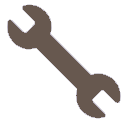Premium Domain Name For Sale: Handyman.ph

The Ultimate Digital Asset for the Philippine Home Services Market
Own the Authority. Own the Market.
The domain name handyman.ph is more than just a web address; it’s a category-defining asset in the rapidly expanding Philippine home services industry.
In a country of over 110 million people, where home ownership is rising and maintenance needs are constant, the demand for reliable handymen, contractors, and home service providers is enormous. This domain captures that demand instantly and authoritatively.
Why Handyman.ph is a Must-Buy Asset
1. Unmatched Memorability and Authority
- Direct-Match Keyword: “Handyman” is the universal, high-volume search term for home repair and maintenance.
- Instant Recognition: The name is straightforward, descriptive, and requires zero marketing spend to explain what your business does.
- High Trust Factor: Customers implicitly trust a domain that perfectly matches their search query. It projects market leadership and stability.
2. Superior Local SEO Advantage
- .ph = Filipino Market Focus: The country-code Top-Level Domain (ccTLD) is crucial for local Search Engine Optimization (SEO). Google and other search engines prioritize .ph domains when a user in the Philippines searches for a service.
- Keyword in Domain: While its direct SEO weight has changed, having the primary keyword in the domain name still offers a psychological and initial ranking advantage.
- Zero Ambiguity: It clearly signals to both users and search engines: “We are the definitive Handyman service in the Philippines.”
3. The Power of Type-In Traffic
- People looking for a handyman will literally type “handyman.ph” into their browser, bypassing search engines and directly landing on your business. This is high-intent, free, and incredibly valuable traffic.
Future Use & Content Suggestions: Your Blueprint for Success
The potential of handyman.ph is vast. It can be developed into a dominant force in the Philippine services sector.
The Value Proposition
- Avoid Headaches: Secure the best name now. Don’t spend years and millions trying to market a confusing or lesser-known domain name.
- Future-Proof: This domain will only appreciate in value as the demand for digital home services grows in the Philippines.
- Ready for Investment: A premium domain like this attracts serious venture capital and corporate attention, providing instant credibility to your business plan.
Serious Inquiries Only
This is a premium, category-killer domain name. We are seeking a buyer who recognizes its exceptional value and potential for market domination.
Do not miss the opportunity to own the undisputed leader in Philippine home services.
To Receive Pricing and Discuss Acquisition:
Please contact us using the
Contact form
or send us your offers at
GoDaddy
or on the
Sedo Marketplace
All inquiries will be kept strictly confidential.
OWN HANDYMAN.PH TODAY. OWN THE MARKET TOMORROW.
